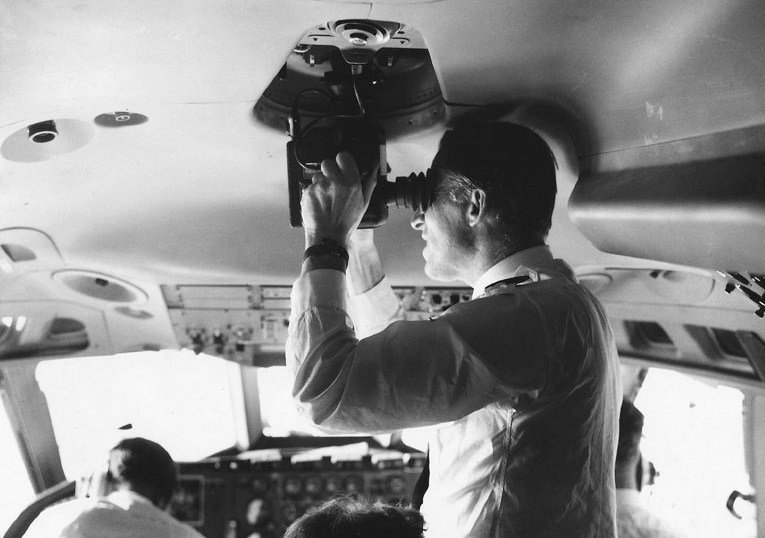Sextant in one of the coolest  instruments humanity invented.
instruments humanity invented.
So much for “let’s decomission ILS and use LPV instead”….
Unfortunately we don’t have enough room in our aircraft for proper celestial navigation:

Traditionally the Navy only used the Sun. Shots taken before breakfast, at lunch time and then before afternoon tea meant you knew where you were by dinner time.
Star navigation is accurate to a few hundred metres and the automatic technology was developed in the 1960s for ICBMs and spy drones.
But surely one would not use a sextant today. One would have an automatic device.
I think this is a p1sstake because of INS.
I thought ICBMs used inertial navigation. I didn’t think they had the camera/image processing technology in the 60s that would fit on a missile to be able to image the sky and process it for celestial navigation.
INS drifts. You need to update it periodically with something. Warships get shot at, which breaks stuff. All celestial Nav needs is a sextant, two books of tables and a watch.
It’s good contingency, it isn’t actually that hard to do, and it’s a professionally satisfying skill to have. I used to enjoy teaching and doing it when I was at sea.
All celestial Nav needs is a sextant, two books of tables and a watch.
and a clear view of the sky 
Unless you are an ICBM on which case most of the time you will be VMC on top.
I thought ICBMs used inertial navigation. I didn’t think they had the camera/image processing technology in the 60s that would fit on a missile to be able to image the sky and process it for celestial navigation.
I also recommend this book which describes similar technology used on camera drones in the 1960s. These systems don’t appear to image the whole sky; they use a template and look for a fit on a group of specific stars. Apollo had the same sort of system, done to enable the flights to be completed even if the Russians jammed radio comms.
Peter wrote:
Apollo had the same sort of system…
Apollo had a proper human operated sky sextant enabling the astronaut to take angular measurements between objects of his choice. It was linked to the guidance computer which read out the angles and the timestamps (there is a “Mark”-button next to the sextant optics) and did the processing. Ephemeris data of the navigation stars were woven into the core memory ropes of the computer.
But almost every satellite and spacecraft now in use has a star sensor which is basically a wide-field digital camera that compares it’s current view with a memorised star chart and outputs orientation angles directly as digital values. Clear and dark sky permitting, such a sensor could of course be mounted on every aircraft too. The pre-digital star trackers (1960…80 or so) worked by projecting a camera image through a transparency showing the sky onto a photosensor. When the stars of the camera aligned with those of the film, the output signal would be maximum. This principle worked for only one orientation.
I am sure someone will make an app for this. Sounds like it should be feasible with a smartphone with camera?